President's Message - March 2021
Montreal's Mathematical Monuments
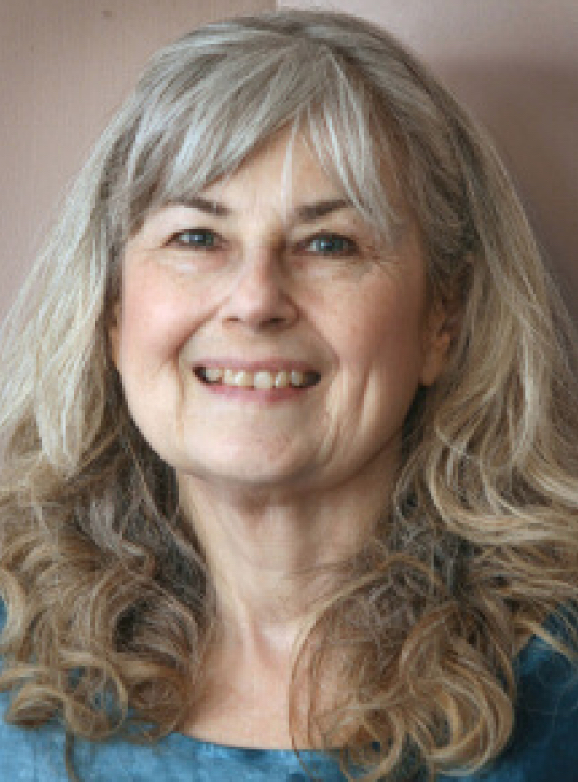
JUDY MENDAGLIO
judy.mendaglio@oame.on.ca
It is early January. The new year has just begun. So much has happened since the writing of the last President's Message, it is very difficult to decide on a theme or topic to write about. The world may feel like a very different place by the time this column is read. At this moment, we are in a pandemic lockdown. Quebec has issued a curfew, and we are wondering what will happen here in Ontario. Teachers, students, and families are again facing so much uncertainty that sustained high stress levels are largely unavoidable. Thinking about this relentless uncertainty and stress has reminded me that there is something in my own life that has always allowed my mind and body to relax-thinking about the mathematics in everything that surrounds me. Yes, mathematics takes me to my happy place.
Why does mathematics mean calm and certainty to me? I have sat in on many seminars at which the question, "Why did you choose to study mathematics?," was asked. I have pondered that question for many years. The answer did not immediately jump out at me. For some people, mathematics is a subject for which they achieved high marks in school, and that was their impetus for continuing to study mathematics after high school. For some, they saw the value in studying mathematics because of their desire to pursue physics, or engineering, or computer science. Neither of these was true for me. While my marks in mathematics courses were certainly fine, they were not my best marks. I did not have a love of the natural sciences or other areas of applied mathematics. However, I did feel a passion for pure mathematics, and I knew that I needed to learn more about this mysterious and magical field.
I now believe that I chose to study mathematics because I came to understand that the essential nature of mathematics is that its truth is unwavering. It is always there for you when you need it. It is dependable. And, once you really look, you realize that it is everywhere-in our natural world as well as our constructed worlds. We live in times of relentless change and face unprecedented challenges. How nice to have this wonderful, reliable, enduring mathematics surrounding you and be able to enjoy its unshakeable peace and comfort, secure in the knowledge the foundation of mathematics is unshakeable.
So, what math surrounded me when I was growing up in Montreal? What did I see that might have affected my choosing to study mathematics?
For me, Montreal is defined by its geography. It lies on an island, so it is surrounded by water. Its most prominent feature is Mont Royal, a three-head hill that provides park and recreation space as well as spectacular views. At its maximum, its elevation is 764 feet (233 metres). Have you ever looked at an old map in a museum and wondered how geographic maps of islands and their coastlines were made without the technological tools upon which we now depend? How were topological maps that accurately described the elevation of land masses made? Contour maps date back to the sixteenth century. How did they make these? Why did they want them? What questions were they seeking to answer? What I now know is that whoever mapped these coastlines or drew the topological maps knew about the power of mathematics.
Montreal is an old city with beautiful old buildings. As reported in the New York Times on December 10, 1881, Mark Twain spoke about Montreal in a speech at a banquet in his honour: "This is the first time I was ever in a city where you couldn't throw a brick without breaking a church window." Some of these churches, like Notre-Dame Basilica, date back to the 1600's. I never stop wondering how people, that long ago, with the instruments and tools they had, were able to go from two-dimensional designs to three-dimensional physical structures to create such beauty. For me, this is astonishing.
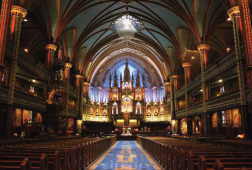
If you go into any place of worship, you are surrounded by geometry. Looking at this image taken inside the Notre-Dame Basilica (Figure 1) in Vieux-Montréal, one cannot help but notice the calming symmetry, the perfection of the curves of the arches, the exacting spacing of the spirals-all resulting from the careful application of mathematical relationships.
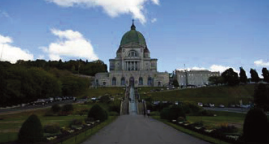
Walk toward the National Historic Site and Canada's largest church, St. Joseph's Oratory (Figure 2), and one is provided with another stellar example of the beauty of symmetry. I am always stunned by the importance of symmetry in the design of old and even ancient structures all over the world. How careful was their planning, and how exact were their measurements to achieve such beauty? How can we use curved triangles to create a dome? Does a dome have the same kinds of symmetries as a hemisphere?

Look at any type of building (Figure 3)-homes, office buildings, government offices, museums, barns. How is symmetry manifested in these structures?
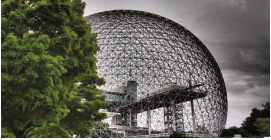
Perhaps it was growing up with the opportunity to visit Buckminster Fuller's geodesic dome (Figure 4) whenever I wanted that instilled love of the physical beauty of geometry. Despite the extraordinary exhibits that are found in museums such as this, I always find myself looking at the building itself, taking photographs of interesting scaffolding, buttresses, fixtures, staircases-all places in which geometric structures come to life. Function meets beauty.
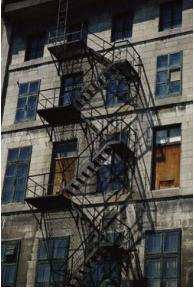
Look at the outside staircases (Figure 5) that are so prominent in Montreal. Function meets beauty, with mathematics leading the way.
 Is the Olympic Stadium (Figure 6) just a sports venue, or does the geometry of this building capture your imagination as it does mine? I look at this structure and cannot help but wonder why early moviemakers designed spaceships to look this way? What geometric properties spoke to them and said, "This would be a space-worthy craft"?
Is the Olympic Stadium (Figure 6) just a sports venue, or does the geometry of this building capture your imagination as it does mine? I look at this structure and cannot help but wonder why early moviemakers designed spaceships to look this way? What geometric properties spoke to them and said, "This would be a space-worthy craft"?
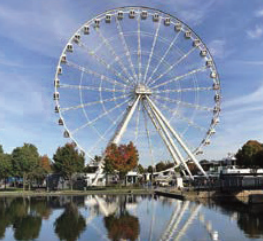
We had two amusement parks in Montreal when I was growing up. Both were easy to get to, and lots of time was spent on rides. Rides are surprisingly mathematical! Examining the mathematics in the design of the rides in an amusement park is such a beautiful way to explore this wondrous subject. Along with the stunning symmetries that can be found in the Ferris wheel (Figure 7) at La Ronde, we could also think about how symmetry helps to ensure stability. Function meets beauty. What other properties of geometric structures can be harnessed to ensure stability and safety? Children love to build things. Could we help them to see the underlying mathematics in what they are building?

The older sister of a friend took an art class on Saturday mornings from Group of Seven artist Arthur Lismer. She would often share with us what she learned. I was always fascinated by her ability to create the illusion of three dimensions (Figure 8), as if the paper had depth. She taught us about perspective from an artist's point of view. It was years later that I learned that it is mathematics and mathematical relationships upon which this technique is based.

Montreal's Botanical Garden (Figure 9) is another place to explore the wonderful world of mathematics, but any garden, woodlot, or forest will do. While walking through a park, wooded area, or countryside provides an opportunity to experience nature, it also provides an opportunity to ask "how" and "why" questions that can be answered with mathematical modelling. Why do different plants grow in different places within the same natural space? Why do trees that are the same species and in the same place have different shapes? Why are some trees tall, while others hug the ground? How can you affect how quickly something will grow?
Artists, sculptors, architects, and engineers have long recognized the value of mathematics in achieving both function and beauty in their designs. Looking at beautiful things makes us smile. Smiling relaxes us, releasing stress naturally. Medical researchers, hospital administrators, public health officials, and government agencies have all turned to mathematics to help track, understand, control, and manage COVID-19. Mathematics, properly applied, will always give us reliable information, and so mathematics can offer hope in times of uncertainty. Helping our students understand these "big ideas" should always be part of our mathematics teaching, but especially now, when no one knows what waits for us around the next corner. Take any challenge and pull back far enough, you will find mathematics is essential to finding its solution, including managing change and uncertainty.
Perhaps you and your students would like to take a journey through your own pasts and your diverse cultures and explore the mathematics within? While I found inspiration in Montreal, consider what your students are mathematically seeing in the world around them.
Previous Message:
A Little Bit About Myself
Next Message:
OAME/AOEM & AFEMO Collaborate In Writing Resources

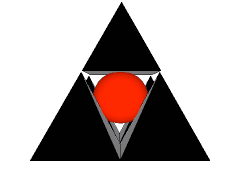








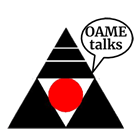

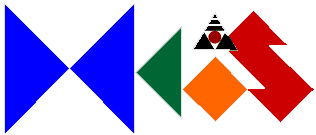





 Like us on FaceBook
Like us on FaceBook